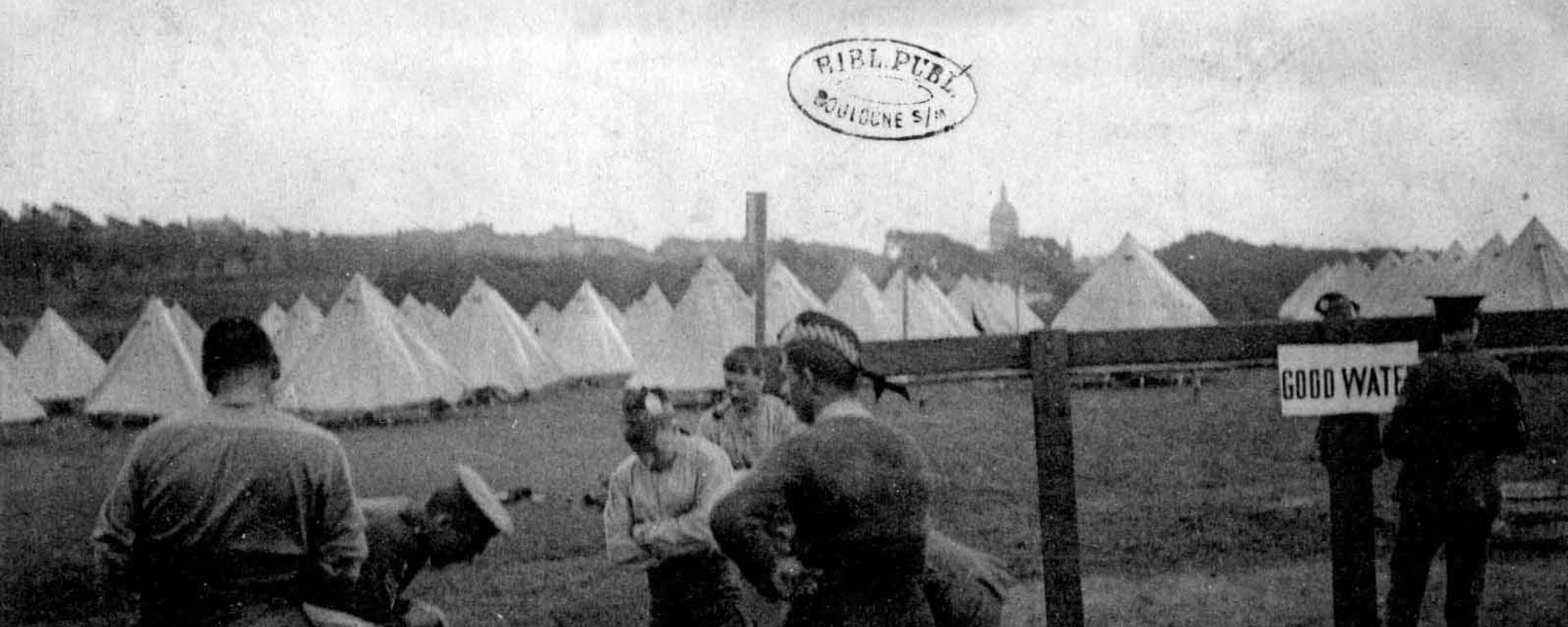Standing at a crossroads in Europe, it was one of the main theatres of war and still carries many of the scars today.
A strategic base behind the lines
Boulonnais, although far from the front lines, was not spared during the First World War. In August 1914, General French landed in Boulogne-sur-Mer with his High Command to take charge of the British Expeditionary Force on the Western Front. From then on, the port experienced an incessant flow of boats offloading British soldiers and their equipment. In the surrounding area, the British troops set up camps of tents and barracks. The port, which was highly strategic, was constantly at the mercy of bombing raids and the German submarines. It was in Boulogne-sur-Mer on 13 June 1917 that General Pershing, leader of the American Expeditionary Force, set foot on dry land. It was an historical arrival which signified the entry of America into the war to fight alongside the Allies.
A war hospital
As well as being a port of war, Boulogne-sur-Mer was also a huge ‘hospital city’, much like Wimereux, which had no less than ten hospitals alone in 1917 to treat wounded soldiers from the front and troops who were ill. Those who died were buried in the local cemetery up until June 1918, when, due to a lack of space, a new cemetery called the Terlincthun British Cemetery was opened two kilometres away in Wimille. Lieutenant-colonel John Mc Crae is buried at Wimereux. He is famous for his poem ‘In Flanders Fields’.
The Second World War
Once again, Boulonnais lived through some particularly dark times during the Second World War. The whole area was subjected to the invading German army and the occupation. Some of the German High Command occupied the most beautiful houses in Boulonnais, including the villas in the Denacre valley, the Château d’Hesdin-L’Abbé and Hardelot Castle. The Atlantic Wall has also left behind several remains all along the coastline. Here and there, bunkers can be found which served as watchtowers and artillery stations for the defensive sector around Boulogne, Le Portel, Saint-Etienne-au-Mont and Wimereux. The German army made significant alterations to the forts already in place, and in Boulogne-sur-Mer’s harbour in particular. These include fort d’Alprech, fort de Couppes and fort de la Crèche.
Heroes forever
It should be remembered that many Allied soldiers came to help liberate the coast. Many lost their lives, and it is with deep respect that we can pay tribute to them in the Commonwealth cemeteries. Among other nationalities, there are Welsh, British, Australian, New Zealand, Chinese, Egyptian and even Indian soldiers. The whole world fought along the coast in the name of freedom.






